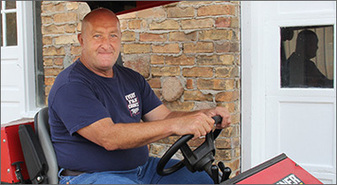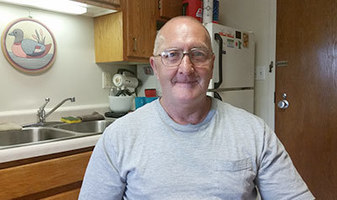|
Ross Owen
Director
612-543-1324
Julie Bluhm
Clinical Program Manager
612-348-8400
Lori Imsdahl
Writer
612-596-9321
 Like us on Facebook
Find us on Twitter
Hennepin Health is an innovative health care delivery program that was launched in January 2012.
The program is a collaboration between Hennepin County Medical Center (HCMC), NorthPoint Health and Wellness Center (NorthPoint), Metropolitan Health Plan (MHP), and Human Services and Public Health Department (HSPHD) of Hennepin County.
Hennepin Health members receive care from a multidisciplinary care coordination team. Other innovative features include a common electronic health record, and tiered care that is based upon a member’s identified needs.
Find eligibility and enrollment information at the MNsure website.
Visit us at
www.hennepin.us/hennepinhealth
for more information.
|

This fall, Hennepin Health will work with the
Minnesota Department of Human Services (DHS) to develop and sign a 2016
Families and Children contract. This opportunity is the result of DHS’
competitive procurement process, through which health plans compete to offer
the best service at the lowest price.
Beginning January 1, Hennepin
Health will be one of three managed care organizations in Hennepin County to serve children, pregnant women, and adults with children who are on the
Prepaid Medical Assistance (PMAP) or Minnesota Care program.
Hennepin
Health is busy preparing for this milestone, and is strategizing about
innovative ways to serve new populations.
Please
keep in touch for updates!
Back to top
Fifty-four-year-old Jon
has a poster of Muhammed Ali in his apartment. “Impossible is nothing,” it
reads, next to an image of the gloved boxer — his mouth open in a triumphant
roar. Jon’s had that poster since 2000. Its words are his motto. He’s looked at
them time and again, even as he’s dodged one curveball after another.
Jon is a recovering alcoholic with depression and bipolar disorder.
We profiled him in Hennepin
Health’s November 2014 newsletter.
Here’s a recap of Jon’s
life then and now:
Jon then
In 2011 and 2012, Jon experienced
homelessness for 13 months. Then the owners of a car wash offered Jon a job
and a place to stay — in the side room of their carwash. They
paid him $25 per day under the table.
At first, Jon was grateful. Eventually, he realized
that they were taking advantage of him. He also realized that he didn’t know
where else to go or what else to do.
Overwhelmed with hopelessness, Jon could not
envision a life worth living. On February 6, 2013, he experienced intense
suicidal urges. But “Suddenly, it was like a flash,” Jon said. In his head he
heard these words: “Don’t do it. Get help.”
Jon called the Nancy Page Crisis Residence. They sent a cab to pick him up.
Over the next week, Jon experienced intense flashes
of heat and cold. The detox symptoms became so debilitating that staff sent
him to Hennepin County
Medical Center. When he was released a few days later, Jon
stopped by the same pub on the way back to Nancy Page and drank eight more
screwdrivers.
“When I came back intoxicated, the staff chewed me
out,” Jon recalls, but that was the turning point. “I’m just killing myself,”
he realized. After that, he resolved to “stay put” and let the experts dictate
his next step — a 90-day stay at the Huss Center for Recovery.
Huss was not Jon’s first inpatient chemical
dependency treatment, but the difference was that Huss was
tailored to people with co-occurring
disorders. “[Before Huss], I didn’t realize the link between
chemical dependency and mental illness,” Jon said. In fact, prior to Nancy Page, Jon didn't even know that he had
depression and bipolar disorder. Incorporating chemical dependency and
mental illness treatment changed everything.
After his stay at Huss, Jon lived at Mission Lodge, a residential center in
Plymouth for men and women with chronic chemical dependency.
Throughout it all, Hennepin Health's care
coordination services helped Jon navigate the health care system and integrate
his medical, behavioral health, and social service needs. Destiny Powell, a
community health worker at Hennepin County Medical Center, is Jon's care
coordinator.
While at Mission
Lodge, Jon spoke of his desire to get his own apartment, finish
high school, get his driver’s license reinstated, and find a job. He was also
interested in becoming a certified peer specialist, and reuniting with his three adult
children who he hadn’t seen or spoken to in several years.
 Jon in October 2014, at Mission Lodge
Jon now
On Wednesday, January 22, 2015,
Jon was offered an apartment at Hamilton Manor, a Minneapolis Public Housing
Authority residence in north Minneapolis. When his certified peer specialist
from People Inc., took him to visit, Jon was awestruck. “[I thought] oh my God,
I’ve never had a place like this,” he recalls. He moved in on January 25.
Soon, Jon reunited with his three
children. His daughter was the first to see his apartment.
 Jon in September 2014, at Hamilton Manor
Jon also began visiting his
mother, his cousin Gretchen, his aunt and uncle in Minneapolis, and his aunt
and uncle in Maple Lake. He helps them with housework, like mowing. Both of
Jon’s uncles have had strokes and are appreciative of the assistance.
Reconnecting with family has been
phenomenal. “The whole time I was out there [at Mission Lodge] I wanted my family,” Jon said. But, “It was something I thought I’d never get back.”
This year, Jon also
began speaking to residents at the Huss Center for Recovery. He usually speaks
three times per month for one hour each time, to groups of 15 to 25 residents.
“I get their attention really fast,” Jon said, of his presentations. “I take
pictures of the cars I banged up [while intoxicated] … I bring my criminal
record and pass that around in the group … I’m like a big brother [to them.]”
Jon’s overriding message: “You just don’t give up.”
Jon also attends support groups
himself — a Mental Illness Chemical Dependency group on Mondays, and an Illness
Management and Recovery group on Fridays.
In October, Jon plans to start
classes at the Volunteers
of America Adult High School in Minneapolis. He dropped out
of the Roseville Area High School in 1978, just 11 credits shy of graduation,
and is eager to earn his diploma. “There are jobs that I can do that require a
high school diploma,” said Jon, who is still interested in becoming a certified
peer specialist.
Jon reveals that, since February
6, 2013, he’s been back to the site where he contemplated suicide a few
times. He finds the area “peaceful.” Yet, he also thinks, “How dumb of me. But
I didn’t know at the time that I had anything worth living for.”
Back to top
On September 15, Hennepin Health participated in a webinar with The Lewin Group -- which detailed innovative strategies for engaging hard-to-reach Medicaid and Medicare enrollees. Watch a recording of the webinar here.
Back to top

Hennepin County just launched an online public
health magazine. It's called Healthy You, Healthy Hennepin
and it can help you stay connected to health resources in the county.
Get your free
subscription on Hennepin's GovDelivery subscription portal.
Back to top
Trauma Informed
Care (TIC) is the belief that a quality health
care, human services and/or social safety net organization needs to address the
impact of trauma on every person in that organization.
Hennepin Health
supports trauma informed care and is committed to working with its clinics and
providers to implement TIC principles.
For
the past few months, each issue of the newsletter has featured
one of the seven TIC domains. We share practical ways to implement that domain
and showcase examples of current work that supports it. This issue focuses on
Domain #3.
Trauma
Informed Care Domain #3: nurturing a trauma informed and responsive workforce
Part
III: management and organizational strategies
Working in caregiving environments comes with an emotional cost that can lead
to personal and professional consequences. The
previous installment of this series addressed the impact of helping others
— and offered coping strategies. This installment will cover management and organizational strategies
for preventing and responding to secondary trauma.
Health care
and social service organizations require employees who can be highly responsive
to the unpredictable needs of their clients. This can mean frequent activation
of “fight or flight” reactions. Combined with exposure to traumatic
material — like reading and conducting assessments, listening to clients’
stories, and witnessing violent or angry outbursts — the entire
agency can become at risk for being impacted by secondary and vicarious trauma.
Over time, and without adequate employee
support, the resulting culture may be characterized by individual self-neglect,
the value of “toughing it out,” risk-taking, and denial of personal needs. This
can lead to the following:
-
Tendency to devalue/ridicule clients, colleagues,
community partners, donors
-
Employee cynicism, depression, lack of
motivation
-
Employees who doubt the efficacy of their
interventions
-
Workers with excessively high expectations for
their and others’ work performance
-
Employees who withdraw from colleagues/team
-
Employees who deviate from professional behavior
-
Loss of interest in work and decreased ability
to complete tasks
The
items above are signs that your staff or colleagues may be struggling and need
help — but they can easily be
interpreted as a need for discipline. If staff feel like they will be
ignored, devalued, demoted, or fired, they will not seek the resources
they need to understand and address their trauma. While disciplinary action may
be necessary, understanding the origins of an individual’s distress can help
supervisors engage in more effective interventions and coaching.
There
are strategies that organizations can take to maximize employee functioning —
and to prevent and respond to trauma:
-
Encourage connections, morale and
relationship-building between staff by working in teams, and by organizing
social activities and peer support networks
-
Encourage staff communication and contribution
-
Provide staff at all levels of the
organizational hierarchy a voice in decision-making
-
Provide staff with information about how and why
decisions about resource allocations were made
-
Allow employees to take time off after increased
work load or crisis exposure
-
Diversify workload (i.e., allow employees some
direct client work balanced with other duties, such as systems level or
preventive work). This can decrease employee exposure to traumatic material,
provide perspective, and offer an opportunity for reflection.
-
Provide a safe, private work space and a calming
place to decompress
-
Allow staff to have personally meaningful items
in their workspace — pictures, items, or quotes that remind them of why they do
their work
-
Make sure that consultation is productive. A
“hallway case consultation” culture that respects confidentiality is fine, but
teach staff containment strategies so that employee processing is helpful, not
harmful.
- For managers and supervisors, set a good example
by practicing work-life balance, and encourage your staff to do the same.
Openly value things and people outside of work and take allocated leave time.
Responding
to specific traumatic incidents:
-
Develop crisis policies, procedures, and
protocols
-
Establish a debriefing strategy that can be deployed
immediately; some organizations have implemented “after action reviews,” a
strategy used in the American Armed Forces
-
After a traumatic incident, provide immediate,
instrumental support to impacted individuals (e.g., help them to focus by
doing an activity together like organizing a room or completing a concrete task)
-
Understand each individual’s help-seeking
patterns and use coaching as necessary
-
Maintain relationships with services that can be
deployed when staff need help (e.g., employee assistance program providers)
-
Provide ongoing, accessible support. Many staff
impacted by a traumatic incident don’t realize it until months later; have a
mechanism for checking in regularly.
(The
above is adapted from information provided by the Headington Institute and
Angela Lewis-Dmello, LISCW, Domestic Abuse Project.)
Back to top
|